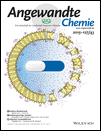Synthesis of Silicate Zeolite Analogues Using Organic Sulfonium Compounds as Structure-Directing Agents
Abstract
A microporous crystalline silica zeolite of the MEL structure type and three other zeolite analogues composed of germanosilicate frameworks were synthesized using tributylsulfonium, triphenylsulfonium, or tri(para-tolyl)sulfonium as the structure-directing agent. The germanosilicates thus obtained had ISV, ITT, or a new zeolite structure depending on the synthesis conditions. The structure of the new germanosilicate was solved using X-ray powder diffraction data with the aid of a charge-flipping method. The solution indicated a crystal structure belonging to the P63/mmc space group with cell parameters of a=16.2003 Å and c=21.8579 Å. After calcination, the new germanosilicate material exhibited two types of accessible micropores with diameters of 0.61 and 0.78 nm.




